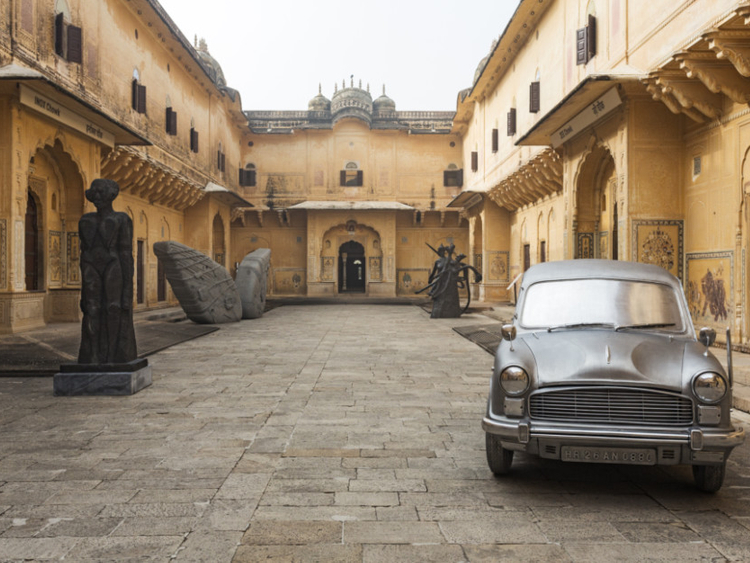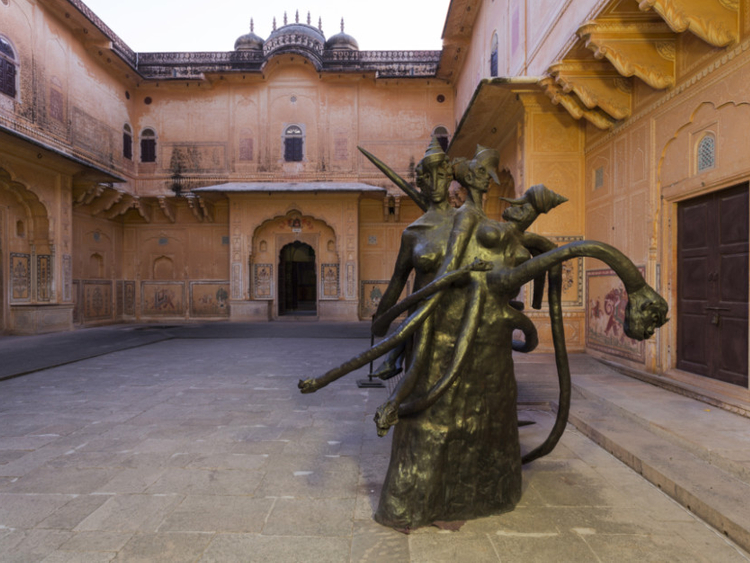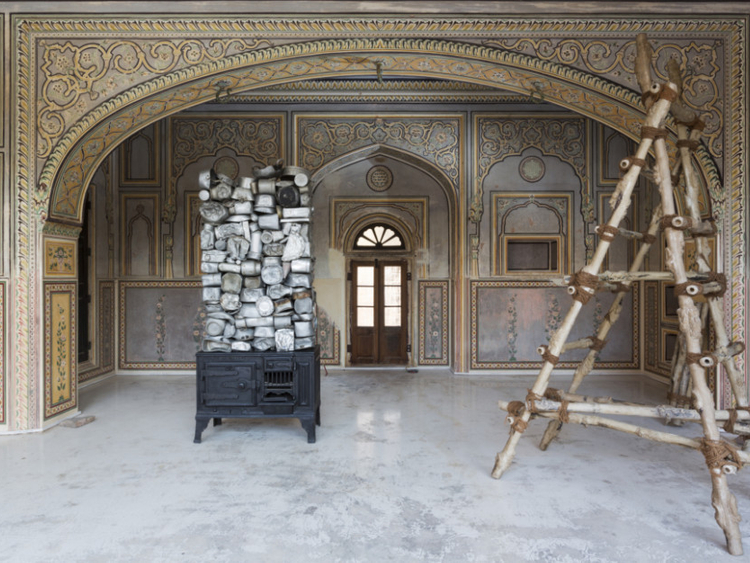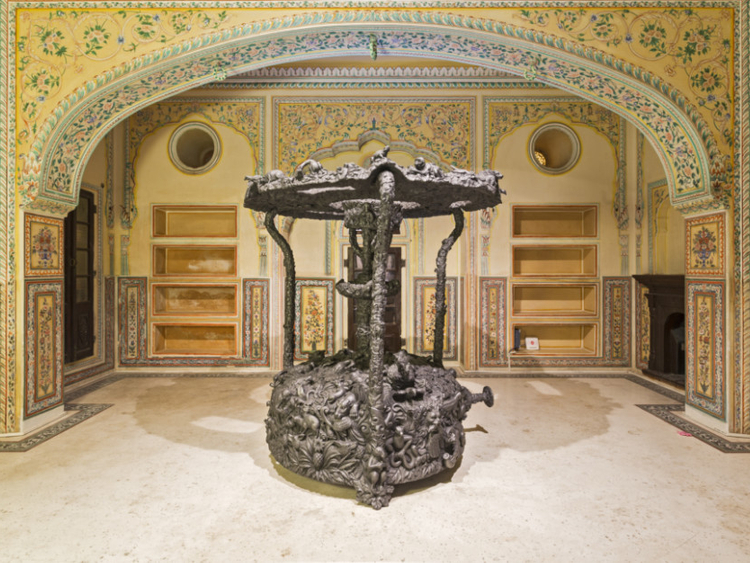
An unwinding road leads me to the majestic Nahargarh Fort in Jaipur, a legacy of the city’s founder Maharaj Sawai Jai Singh II. The fort is located on the ridge above the city and was built in 1734, nine years before the Maharaja’s death in 1743, to be a retreat for the royals. The undulating walls of the fort offer a spectacular view of the urban sprawl below it.
Several years later, Jaipur’s last but one Maharaja, Maharaj Sawai Madho Singh II, built the main structure within the fort, the Madhavendra Palace, to be the royal retreat to be used for leisure mostly during the monsoon. Madhavendra Palace is a two-storey building with suites for the Maharaja and identical duplex suites for six Maharanis. The suit for the Maharaj is on the far end of the entrance, flanked by six suites, three on each side, each of which have a lobby, bedrooms, toilets, kitchen and store.
If you have been to the heritage building before, you may be surprised on your next visit: A ghostly and opaque Ambassador car is parked in the courtyard. Before you start wondering how this sturdy car — long the symbol of the powers that be — found its way through a narrow entrance to the palace, look closer and you realise it’s not an actual car. The signage next to it unravels the mystery. It’s a sculpture by 53-year-old Indian artist Subodh Gupta, aptly titled Doot, the Hindi word for ambassador. The car is cast in aluminum and weighs more than the original car.
On its left is a commanding bronze woman standing as a sentinel. It’s a sculpture by 55-year-old American sculptor Huma Bhabha, titled God of Some Things and made in 2011. The title leads the visitor to believe that the woman is a deity, though from no specific religion. Her form is blocky and solid, as if only slightly carved, her features possibly eroded by wind and water, rather than man-made. The bronze sculpture shows a strong woman who is abused and disfigured. Bhabha is known for flirting with abstraction and deconstruction.
Then there are two wings, seemingly carved from ancient stone that bemoan the fact that art has been reduced to merely a party decoration or the backdrop for a selfie. A pair of footprints marked on the floor guide visitors to stand between the wings, in effect taking on a heroic stance within the sculpture for the sake of the camera.
The artwork — made in 2017 using iron, wood, mica, granite and nylon net — masquerades as ancient monoliths from a forgotten civilisation. Its creators — 41-year-old Jiten Thukral and 38-year-old Sumir Tagra — have named it ‘Memorial’.
Perched behind the aluminum car is a monumental bronze work by 48-year-old Bharti Kher. The artwork, titled Choleric, phlegmatic, melancholy, sanguine was created between 2009 and 2017 and articulates a plethora of female identities. Warrior, Goddess, Witch, and Angel are fused into a single fantastical being, her rubbery limbs in defiance of the solid metal in which they have been cast, a phantasm dancing to her own internal soundtrack.
As you walk through a series of labyrinthine rooms, corridors and staircases of the palace, you discover more such artworks.
Welcome to India’s first contemporary sculpture park.
It’s an attempt to take art out of galleries and museums and make is accessible to the common man. Internationally, sculpture parks are set up in big gardens and parks for everyone to appreciate art but in India art continues to be elite, limited to galleries, says the park’s project director Amrita Kaur.
“What makes this exhibition even more important is the fact this establishes a conversation between art and architecture, which is a first in the country,” Kaur adds.
The exhibition of 62 installations by top international and Indian contemporary artists at Madhavendra Palace spark visitors’ imagination about the elaborate galas and the secret rendezvous these walls have witnessed.
“You come to visit a heritage site and you get to see such wonderful artworks, too, without any extra cost — isn’t that a bonanza?” asks Kaur. The sculpture park has increased the number of visitors to the fort by 25 per cent since it opened in December 2017.
“For many years now, people have been coming to this beautiful palace — they come, they look and go away, but to keep this space living, it is important to merge it with today and if people are able to get to the works, where their imagination can be captured, where things can take off, where things can happen within these beautiful walls, I think it’s a privilege for someone like me to allow it to happen,” Rajasthan chief minister Vasundhara Raje said during the launch on December 10 last year.
The idea of a sculpture park took root after a one-off conversation between Aparajita Jain of Saat Saath Arts (SSA) and Raje about a year before the park’s launch. The CM agreed to give a heritage property to Saat Saath Arts, which is a foundation, to create something that takes arts to masses. After the foundation got the mandate from the Rajasthan government, a host of corporate sponsors came forward to fund this unique project.
Peter Nagy of Nature Morte Art Ltd curated the exhibition that includes artworks by 15 Indian and nine international artists. International galleries such as Hauser & Wirth, London, Salon 94, New York, Xavier Hufkens, Brussels, Sikkema Jenkins & Co, New York and Livingstone Gallery, The Hague, have lent artworks for the exhibition to support the unique initiative.
After the Saat Saath Arts got the mandate for the sculpture park at Nahargarh Fort, Nagy went around studios to choose artworks that would work in the present setting. Getting a final list ready, talking to artists, paper works and getting the installations to the fort took nearly eight months.
“Setting things up at the palace itself took 10 days,” says Kaur.
“Saat Saath’s endeavour has always been to showcase India’s prowess in contemporary art,” says Jain, the founder director, “and this initiative aims to do just that: promote India’s growing interest in contemporary art and culture whilst also embracing its important heritage.”
Nagy says all artworks are sensitively installed to ensure no damage or markings to any surface of the palace because it’s a heritage property.
Every artwork has a signage next to it, in English and Hindi, mentioning the name of the artist, the year it was made and the medium it is made of.
“We have tried to put artworks which can handle weather changes, like recently there was a dust storm… sometimes it gets extremely hot or extremely cold the other times, we have to keep in mind the entire weather changes over a year and that’s why we chose sculptures,” explains Kaur, adding that a display of paintings won’t work outdoors because of maintenance issues.
The mandate to Saat Saath Arts is for 10 years. Every year, there will be a different set of artworks. The current exhibition will get over in November this year — the artworks will be removed, sent to their galleries, studios, and new ones will be installed.
Kaur says enthused by the concept, some other state governments have approach Saat Saath for replicating it. “Different states want to work with different venues. We don’t want to restrict ourselves to heritage sites — we can set it up in an old building or open parks,” she adds.
Shreyasi Goenka, co-director of Saat Saath Arts and content editor of English newspaper DNA, says the initiative, where an Indian state has collaborated with a non-profit organisation to support contemporary art, sets an example to underline how imperative public-private partnerships are in the promotion of public art.
If you are planning a trip to India, make sure you include Jaipur in your itinerary and go before November this year, otherwise you may miss Vikram Goyal’s The Hundred Petal Lotus, handcrafted by skilled artisans in stepped tiers using multiple sheets of beaten brass. Placing the installation on the rooftop of the palace makes it look grander.
Rakesh Kumar is a writer based in Jaipur, India.

















